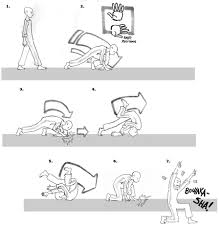Lets first get this one thing out of the way, parkour and free running are actually two different styles of dynamic traveling. Parkour is all about getting from point A to point B in the shortest time and most efficient manner possible. Free running is taking an urban area and turning it into a improvised, tricking playground. The risks for both are the same and the methods are similar, but parkour is no where near as flashy as free running. I prefer parkour since the physics of the style can actually still improve and it has a lot of potential in terms of the techniques themselves. It has it dangers, especially when it comes to rooftops or huge gaps, but the techniques uses the physics of the human body and how to redistribute the energy in order to decrease the force by 60 or 70 percent. A good formula for clearing a gap when it comes to distance would be v^2/g. Basic techniques that require a lot of practice and a lot of calculating of placement, energy, and timing would be the flips, drops, jumps, and climbing. Good examples:
The Wall run:

Accounts for friction, weight distribution, and velocity.
Precision Jump:

Calculate the potential energy to kinetic energy in order to land on the specific point.
Roll:

Used to decrease the energy greatly from high falls and to redistribute the energy through the shoulder back into the ground.(spot where you want to land in order to begin the roll)
Parkour also demands that you train your body in order to get used to the physics of the techniques and also have you figure out your techniques that you can apply to the originals that helps you move better or safer. The more advanced techniques go into the longer hang time for flips or do more flips in one leap and some require high velocity rotations in order to even start the technique.Hope this was a decent introduction to the physics of parkour and feel free to give your opinions they would help out a lot.
Tuan Tran